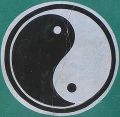Yin And Yang
Balancing The Chinese Life Force:

2. Yin And Yang:
When the concept of yin and yang originated in the 4th century BC. It introduced a marked shift away from the traditional Chinese belief that a person’s life was at the whim of the gods, ancestors and demons, all of whom had to be pacified with the rituals and sacrifices. Yin and yang theory explains how qi differentiates the world we live in into opposing elements and how these elements interact. The Chinese character for yin translates as “the dark side of the mountain”, while yang means “the bright side of the mountain”; everything that exists in the universe is believed to consist of both yin and yang properties. The yin and yang symbol perfectly illustrates the properties of this theory. Like all entities that function as part of the universe, the human body comprises a combination of yin and yang elements. Yin is feminine, with cold, dark, quiet, static and wet properties; yang is masculine, with warm, bright, dynamic and dry properties. Without yin there is no yang, and vice versa. Their interdependent nature underscores the basic TCM principle that you can only achieve true balance and health when those two opposing forces are in balance. This principle of harmony and balance is central to all Chinese thought. This equilibrium can be disrupted by influences within (emotional disturbances such as fear, grief, joy, shock, anger, sorrow or worry) and external environmental factors (caused by cold, fire, heat, wind, dampness and dryness). These act to disrupt the movement of the body’s vital substances and the healthy performance of our organs. The Chinese treatments used in spas today are modern adaptations designed to counter these internal and external factors so as to rebalance the yin and yang elements within us. This can be achieved by the manipulation of qi along the meridians through which the body’s vital substances flow.